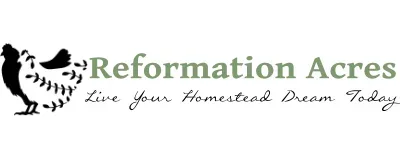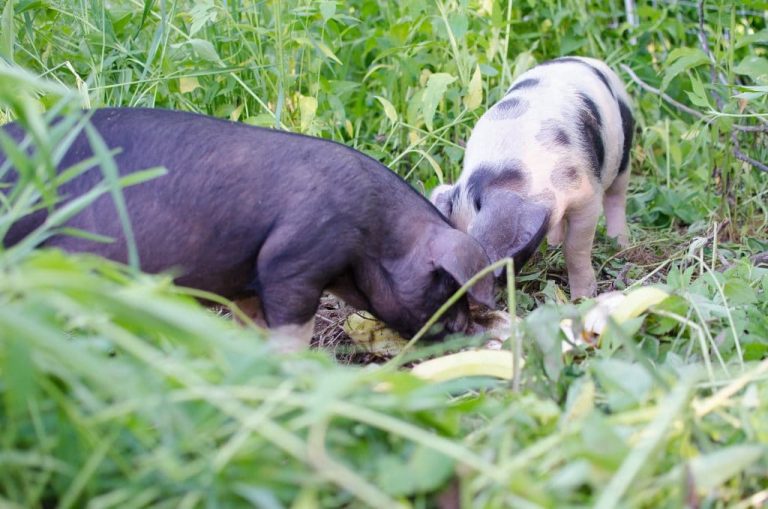Your Questions: Pigs in the Pasture

Do you rotate your pigs through the pasture?
When you’d like to raise your livestock with minimal or, better yet, no medical intervention, such as antibiotics and wormers, like we do, rotating their living quarters is a really good idea.
Not allowing them to live in the same area where they been leaving their bodily waste reduces their susceptibility to disease or parasites. Pigs have a reputation for doing their business in one corner of their pen and keeping it there, but I’ll be honest, that hasn’t been my experience. I’ve seen them more than once empty their bladder while standing at the feed trough.
Since we’re operating on a such a small scale here, “pasture” rotation doesn’t really provide the pigs with any sort of feed or nutritional supplementation other than what they absorb through their skin via the sun. (Which is well worth it to me alone.) In an ideal world, we’d have enough pasture and woods to move them through where they could delight in their pigishness munching and rooting and foraging, but that simply isn’t feasible when we all have to share 2 1/2 acres.
That said, we haven’t rotated them yet and they’ve been here for a couple of months. They do have a relatively large area to roam (large especially compared to their confined porcine relatives). We’ve been busy this fall, a simple and lousy excuse. Moving their feeding trough around has provided a sort of make-shift rotation, but ideally they should have been moved at least once or twice already.
Another advantage, and an extremely important one for the small homestead, is that rotating the pigs provides a reduction in odor. While I’m hoping that it will prove another benefit to raising them in the winter months rather than the heat of August and September, moving them to different paddocks prevents waste from building up and allows it to begin breaking down. Allowing the manure to decompose right where they left it, decreases the labor involved in manure management and offsets the trouble of rotating paddocks. (Note: Collecting pig manure for composting isn’t recommended by gardening experts because of their diets and the potential for parasites.) We can honestly say that our hogs have only begun to produce a noticeably unpleasant odor in the final weeks prior to butchering. When they’re larger…. and what they are leaving behind is larger. I find that to be a benefit since it helps you break the bond you’ve made with the animals over the last half a year.
I suggest experimenting with paddock size. Really it depends on how often you have the time to move them. Most homesteaders still have day jobs demanding their attention and each situation is different. The less time you have to devote to rotation, the larger your paddock should be. Let your senses tell you how long they can last in any given spot according to how quickly they’ve torn it up and whether they’re starting to smell. If they stink, it’s definitely time to move on. Since we haven’t had time to rotate, we did open up an extra section to give them more room to roam. (I’m glad for it because from our back windows I often look out and see them frisking around, playfully running back & forth chasing each other there which is delightful). We use inexpensive polyrope and plastic posts to confine them within the permanent pasture, keeping one strand at about the same height as their nose. Too high or low and they stick their head through, body following. A situation none of us wants to get into.
In a related issue of pig hardiness, we also will not be bringing them into permanent shelter this winter. We expect that since they have a nice fat layer, a wind break from the woods, southern exposure, and are on high ground they will manage to remain hardy and thriving in their environment without having to resort to cramped, dark, festering quarters, risking their health. If it proves to be a mild winter, like last year, they’ll no doubt do wonderfully. With temperatures already dropping down into the 20’s at night, if necessary, we can always take them the little run-in we have for the meat chickens and they can crowd in there and use straw and body heat to keep warm. Another idea would be to supplement their feed with some corn since corn = fat. If we were selecting breeding stock from these animals (I wish we were-piglets would be such fun!) we would be monitoring their hardiness and choosing those which seemed to do the best.
What are your thoughts or experiences with rotating pigs throughout a pasture? Too much trouble or well worth the effort?









